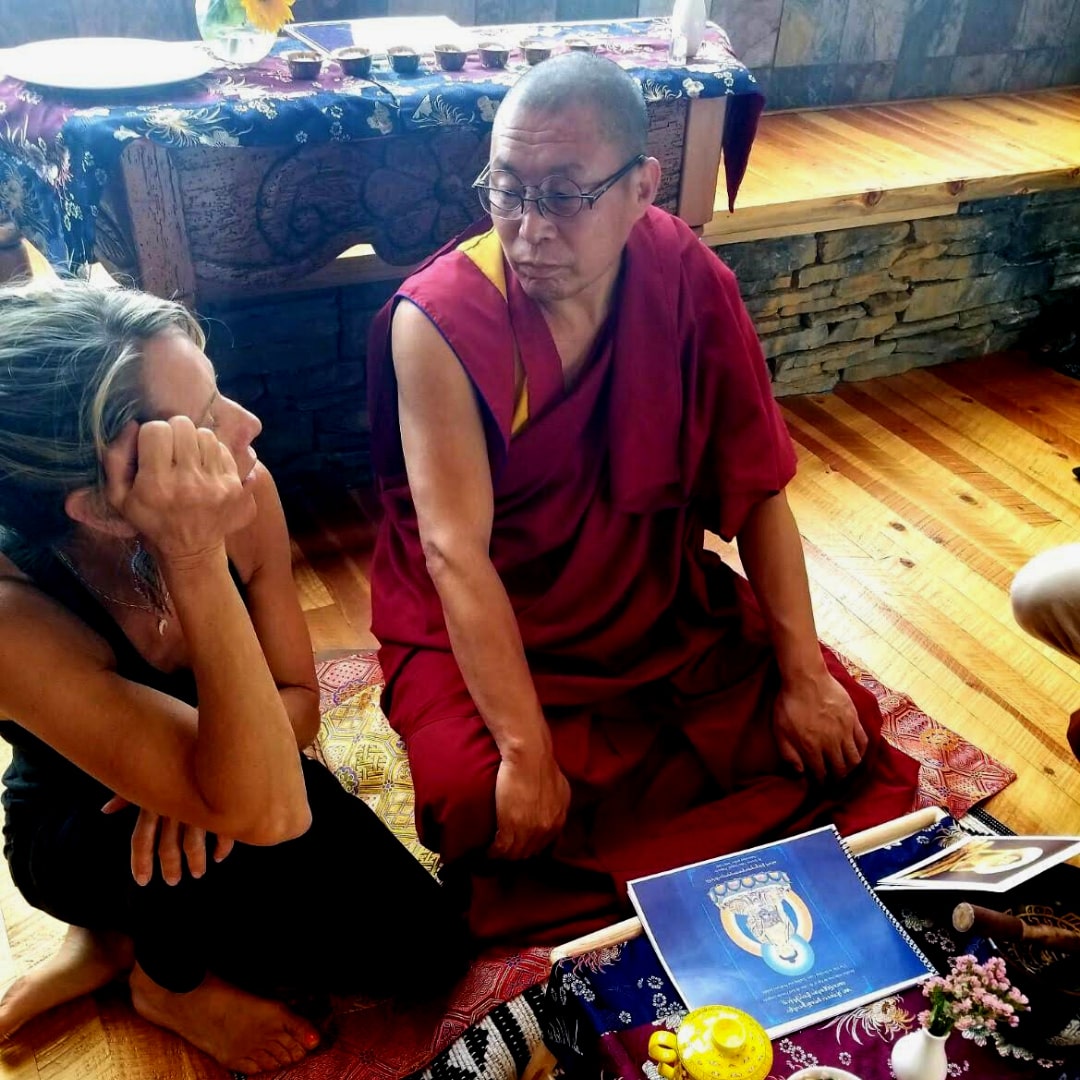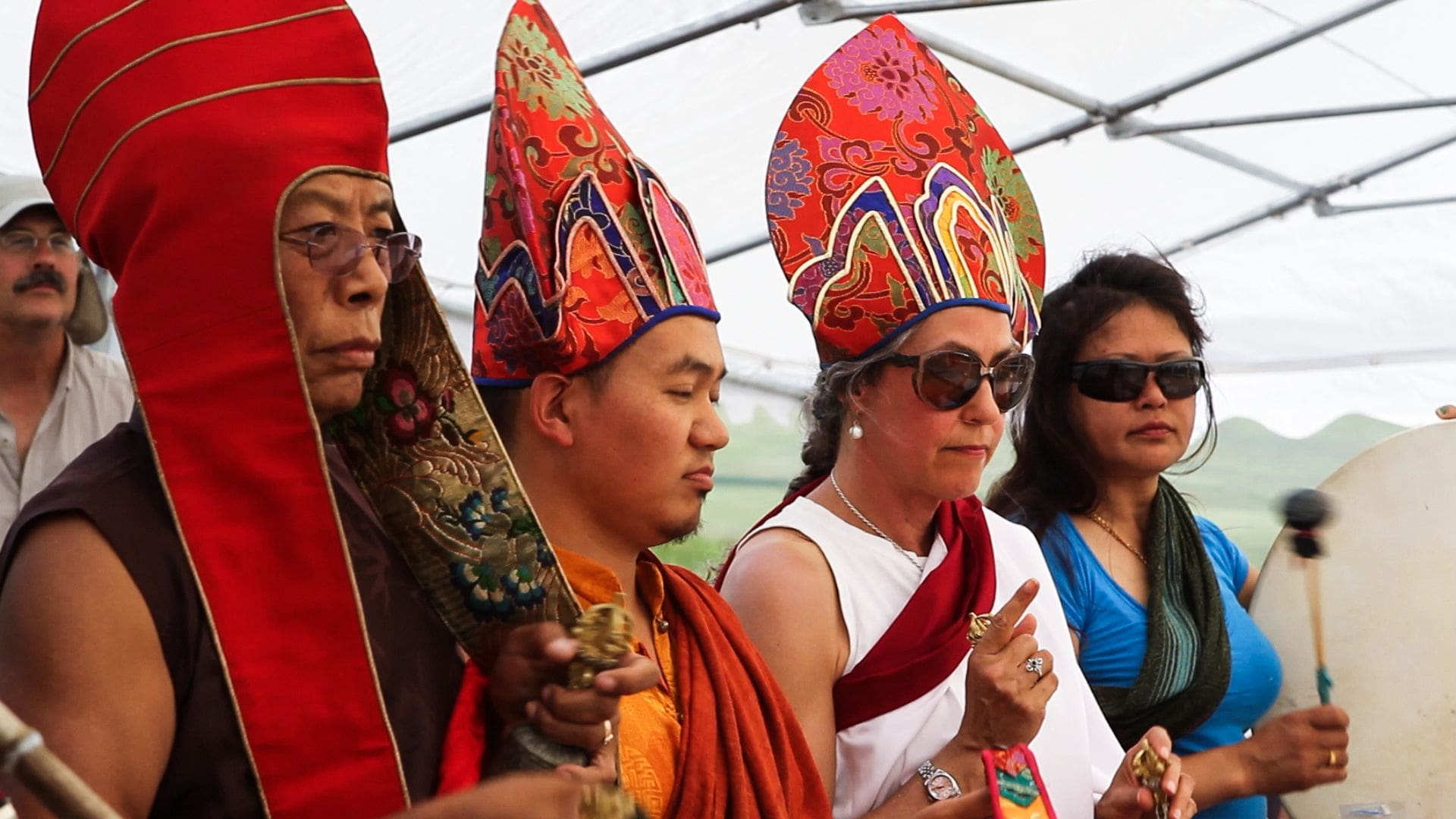10 Tips for Creating a Thriving Learning Circle
– by Rachel Meth
For the past 5 years, I have been involved with Namchak as a Community Advisor where I have been an initiator of a Learning Circle, and now I hold the position of Community Steward where I help initiate and support multiple Circles. From all these experiences, I would like to share what I believe to be aspects of successful circles and what helps them thrive. My hopes are that you may use these tips to help initiate and/or sustain your own thriving Learning Circle.
- Have a clear vision and mission for your Learning Circle that is embodied by the initiator and shared by those who are invited into the circle. When the circle first meets or when a new member joins, it is important to share everyone’s intentions to make sure that all members are on the same page that matches the vision and mission of the circle. For example, if the mission of a circle is to foster connection, peace, wisdom and compassion amongst circle members through studying and practicing Buddhist meditation and dharma, and someone joining the circle is not interested in Buddhism, they may eventually lose interest. Whereas, if everyone in the circle shares and believes in this same vision and intention, the energy will amplify and the circle will take flight!
- State from the beginning that these circles are peer-led with shared leadership and that no one person is expected to be the leader or teacher. Otherwise, if one person is always acting in the role of leader, he/she/they may become burnt out and the circle may not be sustainable. Also, if someone is acting as a “teacher” the power dynamics in the circle shift, and everyone is always looking to this person for the answers. When the leadership is truly shared and this is stated from the beginning and reinforced throughout the circle, this sets the tone that everyone has something to offer and is expected to show up for each other. Some examples of not reinforcing shared leadership is when the person in the circle with an inclination towards a “leader or teacher” personality will always volunteer to lead the circle when others do not step up. There needs to be trust and empowerment amongst group members, so those of us who may be ‘control freaks’ (like I was initially with my circle!) can learn to let go of control and trust in the vision and flow of the circle. This is why I also believe it is important to have a conversation about shared leadership early on in the circle, so that everyone has an opportunity to look at their own beliefs, tendencies, and hopes/fears around group dynamics.
- Introduce shared leadership roles in the beginning and choose new roles each week. (See resource for Rotating Shared Leadership Roles). When these roles are established and introduced from the beginning along with an emphasis on and conversation about shared leadership, circle members are agreeing to be accountable to each other and the success of the circle in these particular ways. Because each circle will consist of members with different personalities, it is important to honor the voices of all, and try not to pressure anyone into anything. I have found that setting a tone that is both relaxed and intentional, helps members to be at ease, so that they can feel engaged without the pressure to “perform.” For example, the role of facilitator can be intimidating to those who are more introverted as well as pressure-inducing for those who are extroverted but may be overachievers. If the group establishes from the beginning that facilitating the circle is easy, everyone is expected to do it, and it’s not a big deal, for the most part, people will step up. I’ve had this situation occur in a few of my circles where those with more introverted personalities knew that eventually they would be asked to facilitate, and so they acknowledged their fears, everyone in the group encouraged them, they facilitated, and they all ended up doing a great job! If someone really does not want to facilitate, that is also okay, and there are other roles they can fulfill to contribute. And who knows, over time they may develop the courage and desire to facilitate. I’ve seen this happen in my circles, especially when everyone is so kind and encouraging of each other. It is also possible for a member who does feel more comfortable facilitating to volunteer to co-facilitate with a member who does not.
- From the beginning, establish content and a set time period to meet, so everyone in the circle has a clear idea of how long and for what they are committing to. This is not to say that a circle can not meet consistently with no ending date at hand, but when a circle is first starting, it is good to have these metrics in place. That way everyone in the circle can decide for how long they are meeting and what they will be studying during that time. For example, the circle may decide to come together for 6 weeks and move through Part 1 of the Always Smiling Ecourse together. Then once the 6 weeks are over, they can reflect upon aspects of the circle that went well, anything that could be improved, what content they will delve into next, approximately how long this will take, and who would like to stay/leave/join the circle at this transition point. Doing this helps to keep the circle alive and dynamic no matter how long your circle has been meeting.
- Present a sample agenda to the group in order to help establish a routine within each circle as well as to take pressure off of each facilitator in having to create their own (see resource for Learning Circle Sample Agenda). This sample agenda can be used each week, and all the facilitator needs to do is plug in the content for that particular week. Then at the end of each circle, a few minutes would be dedicated to choosing roles for the upcoming week. I am even part of a circle that started a spreadsheet where everyone signed up for their rotating roles from the beginning. This may not work in all groups, but it’s a great option! Some facilitators may choose to send out agendas to the group ahead of time, and some may not. Allowing for either option in your circle is a good idea.
- Establish a safe and welcoming container for the circle by creating group agreements together (see resource for Sample Learning Circle Group Agreements). We encourage every Circle to use our Namchak Community Agreements, and these can be revisited throughout each circle in the case that a group member feels that another agreement needs to be added. In one of my circles, we have added 3 new agreements as situations arose in our circle that inspired new ways to help keep the circle safe and welcoming for all. We read these agreements in the beginning of each circle to help create the container and bring everyone into that shared space.
- Allow the circle to flow with both intention and structure while also having room for flexibility. If we stay true to the vision of the circle while also releasing expectations that things will always work out as planned, this may help to keep each circle thriving and sustainable. Although I have just suggested many different strategies to help create a circle that is welcoming, structured and intentional, things may not always go as planned even when using these tools. For example, the group may have decided to meet for 6 weeks and go through the Ecourse, but they may finish in 5 weeks. Or maybe the group had decided to read through a book together, but in the middle, something intense in the world arises (like COVID-19!) and maybe the chosen content no longer feels relevant. It may also be the case that the rotating leadership roles are not all needed, or two of them can be blended. Or maybe during one circle a member checks in and sparks a very interesting topic that leads to a fulfilling discussion amongst the members. It is also possible that one member makes a comment that triggers another, and we need to have a mindful and compassionate discussion to bring everyone back into a safe space. We want to allow spaciousness and flow for both intentional planning and spontaneous magic to occur in our circles.
- Encourage circle members to connect with each other outside of the circle meeting time. The beauty of these circles is that they help us feel connected to others through sharing meditation practices, life experiences, and personal dreams. Building these types of relationships are some of the most fulfilling ones in life and can truly make the difference between someone feeling alone and depressed or connected and grateful. I personally make an effort to reach out to the whole group and/or individual members of my circles throughout the week, and other circle members do the same. This may happen through a Whatsapp chat group, an email, a personal message, a phone call, or an in-person meet up. This may not happen each week with every person, but if this type of contact is acknowledged and encouraged in the group, it can help create stronger bonds between circle members.
- Empower each other to share your passions, dreams and visions for the work you each feel called to do in the world. Because one of the visions for these circles is to relate to our practice through our personal lives, our communities, and the world at large, we have the beautiful opportunity to share our practice on all levels with our circle members. It is nice to dedicate at least one meeting a month to allowing circle members to discuss the work they are feeling called to do in the world or to facilitate a circle in which they share something they are passionate about. For example, one of my circle members happened to mention in a check-in that she had just completed a training about helping children regulate their emotions. Not only was this a topic that she was passionate about, but it was something the rest of us were curious about, and it tied in perfectly to our practices. All circle members encouraged her to facilitate the next circle and share what she had learned, and she felt empowered and supported to do so. Also, if circle members are meeting in-person in the same area, they may even discuss doing some volunteer work together in their community.
- Try your best to stay present and honest with your practice, your life, and your circle members. This means being real and authentic with each other about what you are honestly experiencing with your practice. We will all have many moments where our practice can seem daunting, we are having a lull in our motivation, or we are experiencing hardship in our lives that pull us from our practice. These are actually the times when we need our practice and our circle to be our refuge. Our circle members can help us remember this, support us, and hold us during these moments. If you have co-created a circle that feels safe and welcoming, most likely some people will begin to open up and share vulnerable things about their lives. In these moments, we have the beautiful opportunity to put our compassion practice into action through supporting one another and deepening that satisfying human connection that so many of us are seeking in our lives.



